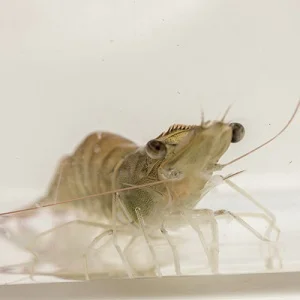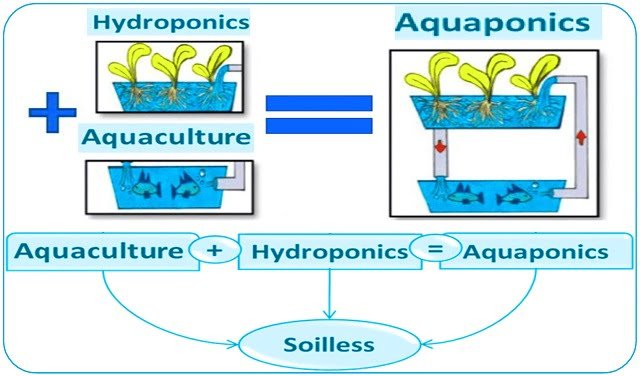
Shrimp aquaculture faces constant health challenges that can lead to significant economic losses. The intensive use of synthetic chemicals and antibiotics to control diseases and promote growth, although common, carries environmental and public health concerns. Faced with this scenario, science turns its gaze towards more sustainable solutions, finding in medicinal plants an arsenal of bioactive compounds with enormous potential.
A scientific review published in the Latin American Journal of Aquatic Research by researchers from the Universidade Federal do Rio Grande (FURG) Rio Grande and the Instituto Oceanográfico de Venezuela (IOV-UDO) summarizes the demonstrated applications and benefits of various plants in shrimp farming, based on recent research.
The Bioactive Power of Plants: Beyond Nutrition
Plants produce a vast range of compounds, known as secondary metabolites, which are not essential for their basic growth functions but are crucial for their defense, adaptation, and communication with the environment. These compounds, accumulated in leaves, stems, roots, flowers, or seeds, are the basis of their medicinal properties. Among the most relevant for aquaculture are:
- Phenols: With antioxidant and antimicrobial properties.
- Alkaloids: Various pharmacological effects.
- Terpenoids: Include essential oils with antimicrobial and anti-inflammatory activity.
- Flavonoids: Potent antioxidants and immunostimulants.
- Saponins: With antimicrobial activity and potential effects on reproduction.
These bioactive compounds are responsible for the multiple benefits observed when incorporating medicinal plants into shrimp aquaculture: growth promotion, immune system stimulation, antimicrobial activity (against bacteria and viruses), anti-inflammatory and antioxidant properties, and even induction of reproductive maturation.
Practical Applications: From the Laboratory to the Farm
Research has explored various ways to apply these plants: whole parts, crude or purified extracts, incorporated as feed additives, or dissolved in water. The key lies in identifying the correct part of the plant, the appropriate extraction method (solvent), and, fundamentally, the optimal dose to achieve the desired effect without causing toxicity.
Viral diseases, such as White Spot Syndrome Virus (WSSV) or Yellow Head Virus (YHV), are devastating for shrimp farming. Extracts from various plants have demonstrated efficacy both in vitro and in vivo in controlling these viruses. Proposed mechanisms include the inhibition or blocking of viral transcription, reducing virus replication in shrimp cells, and stimulating the host’s non-specific immune response.
- In Penaeus vannamei: The efficacy of Callophyllum inphyllum, Clinacanthus nutans, Ocimum sanctum, Phyllanthus acidus, Tinospora crypt, and Uncaria tomentosa against YHV and WSSV has been tested. Olive leaf extracts (Olea europaea) also showed effectiveness against WSSV.
- In Fenneropenaeus indicus: A broad list of plants such as Aegle marmelos, Allium sativum, Azadirachta indica (Neem), Curcuma longa (Turmeric), Psidium guajava (Guava), among many others, have been used against viral infections, demonstrating not only viral control but also immune stimulation. Five herbs (Adathoda vasica, Agathi grandiflora, Leucas aspera, Psoralea corylifolia, and Quercus infectoria) showed antiviral activity against WSSV using different extraction solvents.
- In Penaeus monodon: Plants such as Acalypha indica, Cynodon dactylon, Picrorhiza kurrooa, Withania somnifera, and Zingiber officinale (Ginger) have shown antiviral activity against YHV.
Facing Bacteria: The Fight Against Vibriosis and AHPND
The excessive use of antibiotics has led to the emergence of resistant bacterial strains, a serious problem in aquaculture. Bacteria of the genus Vibrio (such as V. harveyi, V. parahaemolyticus, V. alginolyticus) are responsible for high mortalities and economic losses, causing diseases like Vibriosis or Early Mortality Syndrome (EMS)/Acute Hepatopancreatic Necrosis Disease (AHPND). Medicinal plants emerge as a promising alternative due to their inherent antibacterial properties, acting by altering the bacterial cell wall, enhancing lysozyme activity, or blocking bacterial transcription/translation.
- Against Vibrio harveyi: In P. monodon, extracts of Solanum nigrum and Acanthus ilicifolius showed positive effects. Mixtures of herbs like Aloe vera, Allium cepa (Onion), Azadirachta indica, and Psidium guajava were also effective. In P. vannamei, traditional Chinese medicine herbs and Eucalyptus camaldulensis extracts have been used successfully.
- Against Vibrio alginolyticus: In P. monodon, Allium sativum (Garlic) and Emblica officinalis effectively controlled the disease. In P. vannamei, polysaccharides from Angelica sinensis and extracts of Theobroma cacao (Cocoa) proved effective.
- Against Vibrio parahaemolyticus (including AHPND): In P. vannamei, Allium sativum and Matricaria chamomilla (Chamomile), as well as Rhodomyrtus tomentosa seed extracts, showed potential against this bacterium and the AHPND-causing strain.
- Against Vibrio spp. in Macrobrachium amazonicum: Ethanolic extracts of Moringa oleifera fruits were effective against V. cholerae, V. vulnificus, and V. mimicus.
- Against Lactococcus garvieae in Macrobrachium rosenbergii: Aqueous extracts of Eichhornia crassipes (Water hyacinth) incorporated into the diet improved immune resistance.
Stimulating Growth Naturally
Plants not only combat pathogens but can also act as natural growth promoters. They are a source of essential nutrients (amino acids, vitamins, minerals), and their bioactive compounds can stimulate appetite, improve digestion, and nutrient assimilation by increasing digestive enzyme activity. This translates into better growth rates, feed conversion, and survival.
Stay Always Informed
Join our communities to instantly receive the most important news, reports, and analysis from the aquaculture industry.
- In P. vannamei: Positive effects on growth parameters have been reported for plants like Astragalus membranaceus, Morinda citrifolia (Noni), Phyllanthus amarus, Psidium guajava, among others.
- In Macrobrachium rosenbergii: Herbs such as Cynodon dactylon, Zingiber officinale, Ocimum sanctum (Tulsi), Withania somnifera (Ashwagandha), Eclipta alba, and spices like Piper longum (Long pepper) and Piper nigrum (Black pepper) have improved growth, survival, and muscle nutritional composition.
- In Macrobrachium malcolmsonii: Alternanthera sessilis, Cissus quadrangularis, and Eclipta alba significantly improved survival and growth parameters.
- In P. indicus: Enrichment of Artemia with herbal extracts (Andrographis paniculata, Withania somnifera, Zingiber officinale) or incorporation of extracts (Adhatoda vasica, Murraya koenigii, Ocimum basilicum) into artificial diets improved nutritional indices and growth rates.
- In P. monodon: Extracts of Forsythia suspensa, combinations of herbs (Aegle marmelos, Tinospora cordifolia), and polyherbal formulas (Emblica officinalis, Ocimum sanctum, Withania somnifera) have been shown to promote growth and improve feed efficiency.
Supporting Reproduction and Sexual Maturation
Beyond health and growth, some plant compounds, such as phytoestrogens (isoflavonoids, lignans) and saponins, can influence crustacean reproduction. These molecules have structures similar to animal steroid hormones (like estradiol) and can interact with hormone receptors, stimulating or inhibiting reproductive processes, depending on various factors.
- Plants like Emilia sonchifolia have been investigated to stimulate ovarian development in Penaeus merguiensis.
- Extracts of Moringa oleifera and Zingiber officinale have shown to improve the survival of cryopreserved P. merguiensis sperm.
- The use of Melastoma malabathricum, rich in hormone precursors like lanosterol, has been associated with accelerating gonadal maturation in P. vannamei and the crab Scylla olivacea.
- In P. monodon, feeding with Artemia enriched with herbs such as Ferula asafoetida, Mucuna prurita, Piper longum, and Withania somnifera resulted in higher fertility and better larval quality.
Conclusions and Perspectives
Medicinal plants represent a valuable and multifaceted tool for shrimp aquaculture. Their ability to combat viral and bacterial diseases, promote growth, and potentially enhance reproduction positions them as a sustainable alternative to chemical compounds. However, it is crucial to deepen research to fully understand their mechanisms of action, determine precise and safe doses for each species and compound, and ensure their efficacy and standardization before widespread application in the industry. The potential is proven; the next step is to optimize their use for healthier and more sustainable shrimp farming.
Reference (open access)
Cortez-Mago, Roraysi, Borges, Lucélia, & Wasielesky, Wilson. (2025). Medicinal plants and their applications in shrimp culture. Latin american journal of aquatic research, 53(1), 22-38. https://dx.doi.org/10.3856/vol53-issue1-fulltext-3251
Editor at the digital magazine AquaHoy. He holds a degree in Aquaculture Biology from the National University of Santa (UNS) and a Master’s degree in Science and Innovation Management from the Polytechnic University of Valencia, with postgraduate diplomas in Business Innovation and Innovation Management. He possesses extensive experience in the aquaculture and fisheries sector, having led the Fisheries Innovation Unit of the National Program for Innovation in Fisheries and Aquaculture (PNIPA). He has served as a senior consultant in technology watch, an innovation project formulator and advisor, and a lecturer at UNS. He is a member of the Peruvian College of Biologists and was recognized by the World Aquaculture Society (WAS) in 2016 for his contribution to aquaculture.




